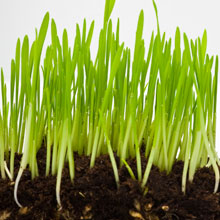Live Material Care Dear Customer, Welcome to the new Live Materials Literature from Sargent Welch. This valuable resource features Instructional and Informational Literature sheets for the most popular live specimens in our collection. From algae to vertebrates and everything in between, you will find the facts and instructions necessary to properly provide care for your live specimens and enrich your lessons with additional background information. All literature is provided in pdf format, so you can read the literature on your personal computer or print as many copies as needed for your class. Organized by type of organism, each specimen’s literature is easy to locate. And, you’ll also find a section of safety guidelines, permit applications, and inquiry ideas for live materials instructional use. We hope you find this Live Materials Literature helpful in your lessons, live specimen setup, and student study. This is the second edition of our literature collection, and we plan to update it yearly to continue to bring you the most up-to-date information and ideas. Because we are dedicated to providing you with the very best, we would truly appreciate your comments on this literature. We value your opinions and will use them to help us improve this and other products in our collection. If you have additional questions about working with your live specimens, please call 800-727-4368. Sincerely yours,
Sargent Welch Live Department
|
 |
